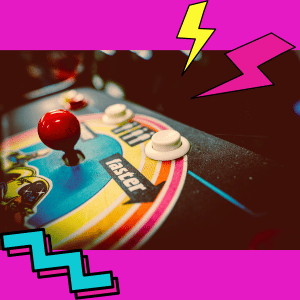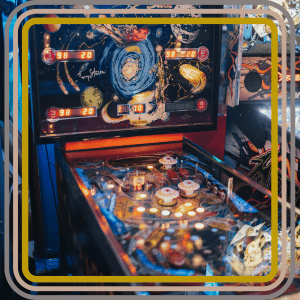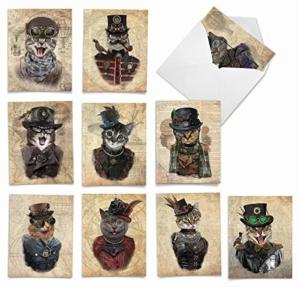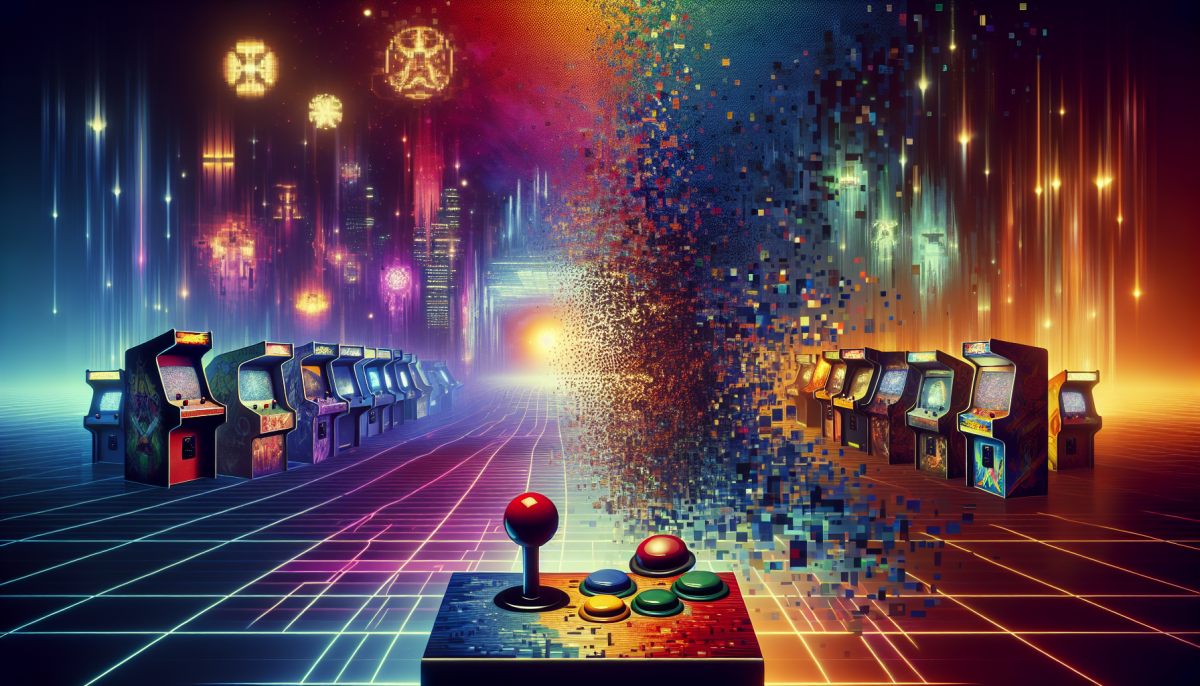
Classic Historia may receive a commission on purchases made through Amazon and eBay affiliate links at no additional cost to you.
Arcades were once the epicenter of every teenager’s social life in the late 1970s and early 1980s. These vibrant spaces brimmed with neon lights, the hum of 8-bit sound effects, and fierce competition. However, their dominance as a cultural phenomenon in popular culture quickly waned as the decade progressed. Despite once being iconic cultural staples, video arcades began fading into obscurity as a mix of technological, social, and economic factors reshaped the entertainment landscape.
The Rise of the Amusement Arcades

To understand the decline of arcades, it’s essential to explore their meteoric rise. Arcades first gained popularity in the late 1970s with the introduction of iconic games like "Space Invaders" (1978) and "Pac-Man" (1980). These titles captivated a generation, offering an entirely new way to play and interact with technology. Arcade machines became a source of both personal escapism and community—players gathered to beat high scores while forming friendships and rivalries.
Key Metrics from the Golden Age of Arcades (1978–1982):
Revenue Growth:
- 1980: The arcade industry revenue hit an all-time high of $5 billion in the U.S.
- By 1982, this had doubled, showing even more significant growth.
Notable Favorite Arcade Game Titles of the Era:
- Asteroids (1979): Sold 70,000 machines.
- Donkey Kong (1981): A game-changing phenomenon, introducing characters like Mario.
- Ms. Pac-Man (1982): Debuted and became one of the most popular arcade games of all time, with innovative gameplay and widespread appeal.
- Star Wars (1983): Featured groundbreaking vector graphics, immersing players in epic galactic battles.
But the arcade’s success wasn’t solely about the games. These venues served as cultural hubs where cutting-edge technology met youthful energy. This dynamic, though, would only last for a short time.
The Shift Begins – Home Consoles Take Over
One of the primary reasons arcades lost their charm by the late 1980s was the surge in popularity of home consoles. Systems like the Atari 2600, released in 1977, started a trend of personal gaming at home. However, it wasn’t until the early 1980s, with consoles like Nintendo Entertainment System (NES) and Sega Master System, that the arcade’s decline accelerated.
Why Home Consoles Eclipsed Arcades:
Affordability:
- By the mid-1980s, console prices dropped significantly. Consumers could bring home a device for less than $200, saving money compared to spending quarters at arcades.
- Example: A single NES cartridge offered hours of gameplay for under $50, whereas a comparable experience at an arcade cost much more over time.
Convenience:
- Families preferred the option to play at home, removing the need to travel to arcades or carry endless amounts of change.
Game Quality Parity:
- With advancements in console technology, the graphical differences between arcade machines and home systems began to diminish.
The Impact of the Video Game Crash of 1983

Another major blow to arcades came with the video game crash of 1983, a catastrophic event that affected the entire gaming industry during this time period. Overproduction, low-quality games, and market oversaturation—particularly with home consoles—led to a consumer loss of trust in video games.
Contributing Factors to the Crash:
Oversaturation of Games:
- Poor-quality video arcade games flooded the market.
Excessive Competition:
- The rise of too many third-party developers and unlicensed games created confusion and distrust.
While arcades weren’t directly responsible for this crash, the aftermath created a stigma around video games of all kinds, stalling growth in the industry until companies like Nintendo revitalized it later in the decade.
How Competitive Businesses Pulled Customers Away from Arcades
The early 1980s were a golden age for arcades in North America, but their dominance was soon challenged by alternative venues like restaurants and other forms of entertainment. Here’s how these businesses reshaped gaming:
The Rise of Video Games in Restaurants
Chuck E. Cheese leads the way
- Founded by Atari co-founder Nolan Bushnell, Chuck E. Cheese became a pioneer in combining food and gaming.
- Guests could play arcade games, win tickets, and redeem those for prizes, making gaming a rewarding experience.
- The venue offered more than just games, with attractions like a live animated animal band, drawing families for a full day of entertainment.
The appeal for families
- Restaurants like Chuck E. Cheese became a massive success as a family-friendly alternative to arcades.
- Parents preferred venues that combined dining with entertainment, eliminating the need to visit a separate arcade.
- Kids were entertained for hours, making it a convenient choice for families.
Growing competition
- Other businesses, such as ShowBiz Pizza, replicated this model, incorporating games into their services to attract a similar audience away from mall arcades.
Bowling Alleys in the Video Game Industry

Transition to family-friendly entertainment
- Bowling alleys were no longer just for bowlers. By the 1980s, many began targeting families.
- Adding arcade games allowed these spaces to offer something for everyone, especially children.
Enhancing the experience
- Video games kept young people entertained while their parents bowled.
- For teens and adults, the games became a fun way to pass the time between rounds, turning a night of bowling into a fuller entertainment experience.
Other Competitive Businesses
The popularity of movie theaters
- Movie theaters began including more amenities, like snack bars and comfortable seating, creating a complete entertainment experience.
- Some theaters introduced small arcade game sections, as a result, diverting attention away from standalone arcades.
The growth of theme parks and large entertainment venues
- Theme parks and family entertainment centers included the simpler offerings of traditional arcades in their venue, which became an instant hit.
- These venues bundled classic arcade-style games with expansive entertainment options like roller coasters and live shows.
Arcade games in gas stations
- During the decline of stand-alone arcades, gas stations emerged as unexpected hosts for arcade machines.
- Many gas stations placed a few arcade cabinets in their convenience store areas, offering entertainment for travelers and locals alike.
- These machines were often older or simpler models, appealing to casual players looking for a quick diversion.
- While not a primary destination for gaming, gas stations contributed to keeping the arcade culture alive in smaller, unconventional locations.
Grocery and Drug Stores

- Grocery stores and drug stores also became likely venues for arcade machines during the decline of traditional arcades.
- Often placed near the entrances or checkout areas, these cabinets provided entertainment for children and teens while parents shopped.
- Much like in gas stations, the games found in grocery stores were typically older or less complex, designed for quick and casual gameplay.
- This setup not only helped sustain interest in arcade gaming but also created a small yet cherished social hub within everyday locations.
Cultural Shifts and Changing Social Norms
By the mid-to-late ‘80s, traditional arcades faced a cultural shift in the United States. The once-novel environment started to feel dated as societal priorities and youth habits transformed.
Technological Progress:
- The novelty of arcade technology dissipated as personal computers, home consoles, and portable devices gained traction.
Rise of Mall Culture:
- Many standalone arcades folded, and those that survived were often found inside shopping malls. This compromised their niche identity.
Parental Disapproval:
- Arcades were sometimes labeled as unsavory or unsafe spaces, leading parents to encourage home arcade systems gaming as a safer alternative for their children.
The Evolution of Gaming Experiences
It’s also important to consider how arcade gameplay itself began to fall short compared to newer experiences that were becoming available.
Limitations of Arcade Machines:
Short Sessions:
- Arcade games were intentionally designed to consume more quarters, often featuring fast-paced action and a short lifespan for gameplay, a stark contrast to the deep, immersive world emerging in a video game console.
Lack of Ownership:
- Players couldn’t own arcade games, whereas owning a cartridge or PC disk offered a tangible sense of investment.
Technological Boundaries:
- Devices like the NES began offering expanded features like save states and complex stories, unavailable in arcades.
Modern Nostalgia and the Rebirth of Arcades

Though the happy days of the 1980s marked the decline of arcades, they haven’t disappeared entirely. The early 21st century ushered in a wave of nostalgia, which has helped arcades resurface in various forms.
Examples of the Arcade Comeback:
Barcades:
- Hybrid spaces mixing the nostalgia of arcade games with the social appeal of modern bars have become popular in cities.
Retro Game Markets:
- Classic arcade cabinets remain prized collectibles, with some selling for tens of thousands of dollars.
Esports Arcade Revival:
- Competitive gaming has come full circle, with some esports arenas integrating arcade experiences.
The story of arcades fading into uncertainty is a multifaceted tale of technological innovation, market forces, and cultural transformation. From their golden era as community hotspots to their eventual downfall, arcades represented a uniquely dynamic chapter in gaming history. Today, they live on through nostalgia-fueled revivals and adapted forms, serving as a reminder of how the entertainment industry constantly evolves to meet the changing demands of society.
💾The First Game Story of Pinball Machines: Rise, Fall, and Revival🚩
From the lyrical chime of metal balls clinking against bumpers to the dazzling lights and intricate designs of their playfields, pinball machines hold a unique place in the history of popular entertainment. These mechanical marvels carved out their legacy over decades, transforming from simple tabletop amusements into cultural sensations. Yet, like many entertainment staples of the 20th century, their popularity faced challenges over time. Here, we’ll explore how pinball machines became a household name, their climb to cultural prominence, and what led to their decline before their nostalgic revival in modern times.
The Origins of Pinball Machines

The story of pinball begins in the 18th century with bagatelle, a French parlor game that involved guiding balls around obstacles on an inclined wooden board. Bagatelle made its way across Europe and into the United States, sparking the creative minds that would eventually birth pinball as we know it.
By the 1930s, the modern pinball machine began to take form. Manufacturers like Gottlieb and Bally introduced games that featured spring-loaded plungers to launch the balls and an array of mechanical bumpers that rewarded players with points. Early machines were entirely mechanical and powered by human interaction rather than electricity. They were coin-operated, appearing in taverns, arcades, and pool halls, offering an inexpensive escape during the Great Depression.
The Boom of Pinball in the 20th Century
The 20th century saw tremendous advancements in pinball technology. By the 1930s, manufacturers incorporated electricity into machines, enabling flashing lights, bells, and more intricate scoring systems. Later, the introduction of flippers in 1947 by the Gottlieb company's "Humpty Dumpty" game redefined pinball gameplay. For the first time, players had control over the ball's movements rather than relying solely on chance.
With their thrilling combination of skill and luck, pinball machines gained mass appeal. They became fixtures in diners, bars, and arcades. The 1970s ushered in the golden age of pinball, featuring iconic games such as "Flash Gordon," "Genie," and "Star Trek." Pinball artistry also flourished in this era, with elaborate themes inspired by pop culture, music, and movies. These glowing cabinets became cultural symbols that captivated players from all walks of life.
Pinball was more than a game; it was a cultural phenomenon. Movies like Star Wars helped cement its presence in pop culture, while pinball tournaments emerged as thrilling spectacles for enthusiasts. Its blend of mechanical ingenuity and artistic design continued to attract fans.
The Decline of Pinball Machines
Despite its dominance in the mid-century, pinball began to wane in the 1980s. The rise of arcade video games like Pac-Man and Space Invaders provided a new, high-tech alternative to entertainment, reducing pinball’s appeal to the younger generation. Unlike pinball, video games offered a vast variety and were faster to adapt to evolving technology.
Pinball's decline was further exacerbated by its perception as a relic of the past. Shifting demographics and the proliferation of home gaming consoles, such as the Atari and Nintendo systems, drew people away from public spaces like arcades. By the late 1990s, many pinball manufacturing companies began to shut down or pivot to other ventures. The advent of digitalization and less demand for mechanical games made pinball machines seem like a product of a bygone era.

A Nostalgic Revival
Yet, what once fell out of favor now enjoys a second life. In recent years, pinball has experienced a nostalgic resurgence. Collectors, hobbyists, and retro gaming fans have breathed new life into this timeless pastime. Events like pinball expos and tournaments have grown in popularity, introducing the game to younger generations who may have missed its heyday.
Modern manufacturers, like Stern Pinball and Jersey Jack Pinball, produce state-of-the-art machines with digital displays, advanced sound systems, and complex gameplay mechanics. These new machines often pay homage to vintage designs while incorporating pop culture themes that appeal broadly, from classic rock bands like Led Zeppelin to popular franchises like Star Wars.
Furthermore, the rise of barcades—a hybrid of a bar and arcade catering to nostalgic millennials and Gen Z patrons—has provided pinball with a space to thrive once more. Whether through a sleek new machine or a lovingly restored classic, pinball proves that its charm transcends generations.
Pinball machines reflect a fascinating blend of technological innovation, artistic design, and cultural impact. Though their popularity ebbed in the face of evolving entertainment options, the enduring appeal of these whimsical machines speaks to our collective longing for tactile, interactive play in an increasingly digital world. Today, as the hum of pinball machines once again fills arcades and barcades, it’s clear that this beloved pastime still has plenty of game left.
Like this article? Discover more at Classic Historia for a deeper exploration into the past that has shaped our world.
Stay connected with Classic Historia and discover more timeless treasures by following us on our social media platforms:
"With Classic Historia, you can find the perfect gift for any occasion or add a touch of nostalgia to your own home."
Business Phone Number:
(833) 222-7544
Business Address:
Classic Historia
1220 Oak Street, Suite J PMB1007
Bakersfield, CA 93304-1072
United States








